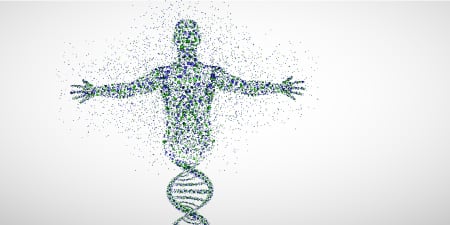The Federal Circuit recently held claims for a personalized medicine treatment were patent eligible and valid. The claims at issue were directed toward administering specific dosages of a drug in the presence or absence of a particular genotype. The Court considered these claims as directed toward a specific patent-eligible treatment, and not to claim broadly the patent-ineligible, naturally occurring relationship between the drug and its metabolism in an individual with a particular genotype.
On April 13, 2018, the Federal Circuit held in Vanda Pharmaceuticals, Inc. v. West-Ward Pharmaceuticals International Ltd. that Vanda’s patent covering methods of treating patients with its anti-schizophrenia drug Fanapt® was directed to patent eligible subject matter and was accordingly valid and infringed by West-Ward. The decision is in contrast to the holding that claims directed toward the naturally occurring relationship between drug metabolite levels and the drug’s likely effects were patent ineligible in Mayo Collaborative Services. v. Prometheus Laboratories, Inc. (566 U.S. 66, 132 S. Ct. 1289 (2012)).
The claims at issue in Vanda Pharmaceuticals are directed to methods of treating schizophrenic patients with iloperidone. The drug dosage is based on a patient’s genotype: poor drug metabolizers, who have low liver cytochrome P450 enzymatic activity due to a specific genotype, are administered 12 mg/day iloperidone or less; other patients receive 12-24 mg/day. Poor metabolism of iloperidone can lead to a cardiac risk factor called QTc prolongation. Administering the lower drug dose to patients with the identified genotype lowers the risk of QTc prolongation compared to administering the higher dose.
The Federal Circuit’s analysis of Vanda Pharmaceuticals’ patent relied on the first step in a two-part test articulated by the Supreme Court in Alice Corp. v. CLS Bank International (573 U.S. ___, 134 S. Ct. 2347 (2014); another Supreme Court case in a recent series that effectively narrowed the scope of patent eligible subject matter under 35 U.S.C. § 101) for distinguishing between patent-ineligible claims to laws of nature, natural phenomena, and abstract ideas and patent-eligible applications of those categories. First, the court considers whether a claim is directed to a patent-ineligible concept. If it is, the court determines whether additional elements in the claim amount to an inventive concept sufficient to transform the claim into a patent-eligible application that amounts to significantly more than a patent on the ineligible concept itself.
The Court noted that the claims at issue in Vanda were directed to methods of treating schizophrenia using iloperidone. Although the relationship between the drug, its metabolism by P450, and QTc prolongation is recognized, the relationship alone was not claimed. Instead, a specific application of that relationship—administering iloperidone at one dose based on a particular genotype and a different dose in the absence of that genotype—is claimed. “At bottom, the claims here are directed to a specific method of treatment for specific patients using a specific compound at specific doses to achieve a specific outcome.” Vanda Pharm. Inc. v. West-Ward Pharm. Int’l Ltd., Nos. 2016-2707, 2016 2708 (Fed. Cir. Apr. 13, 2018), at 32.
Because the Court determined that the claims are not directed to a patent-ineligible concept, it did not address the second step in the Alice test. The dissent would have reached the opposite conclusion for the first step and would have failed the claims under the second step for simply instructing the application of a natural law in a routine and conventional manner.
Vanda Pharmaceuticals suggests that method-of-treatment claims, particularly those that recite administering a drug, and even more so those that recite administering specific doses of the drug, may be patent eligible. Patent applicants in these fields may increasingly seek to present claims as method-of-treatment claims (patent eligible in Vanda) rather than methods “of optimizing therapeutic efficacy for treatment” (patent ineligible in Mayo). Including an affirmative step of administering a drug, especially a step of administering one or more specific dosages of the drug, may help render claims patent eligible. Note, however, that the Court in Mayo cautioned against “drafting effort[s] designed to monopolize the law of nature itself.” Although drafting efforts seemed to help Vanda Pharmaceuticals in the present case, future decisions in this volatile area of patent law may come to a different conclusion.


